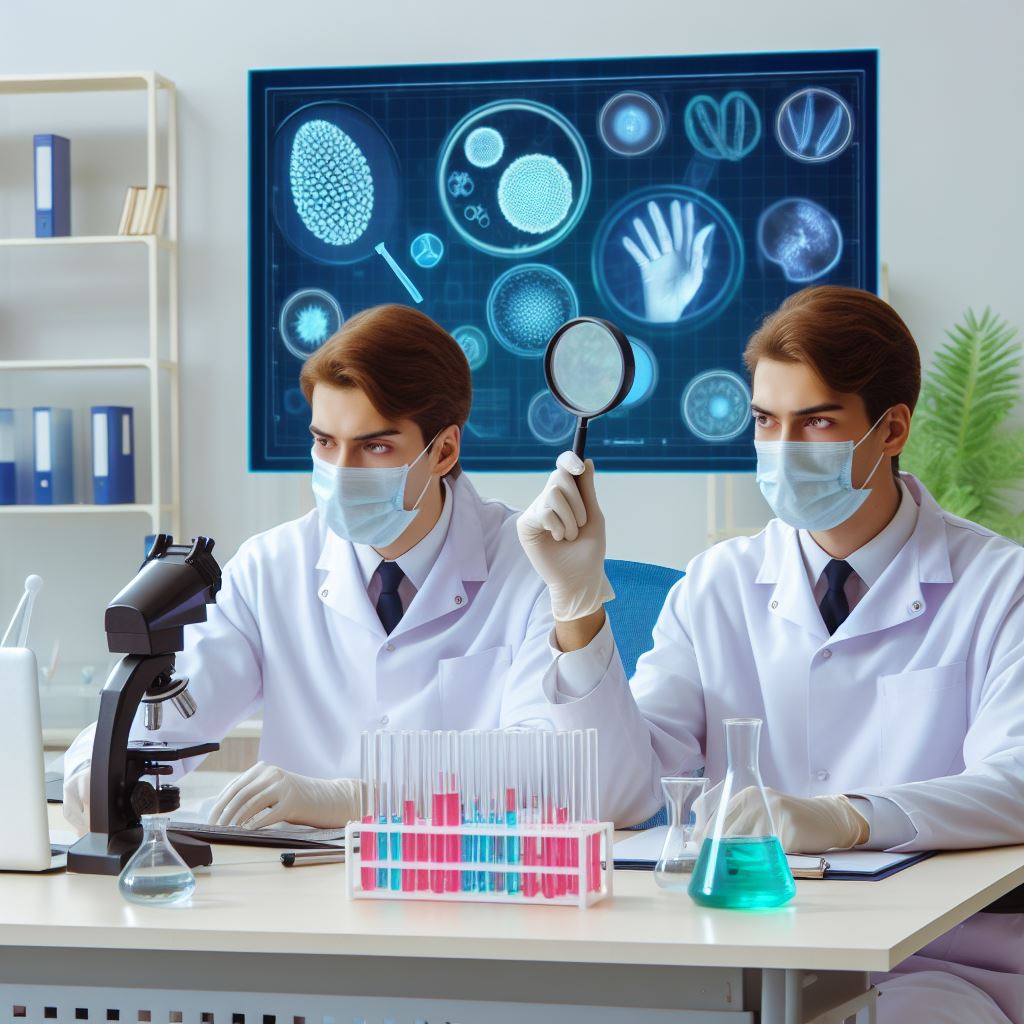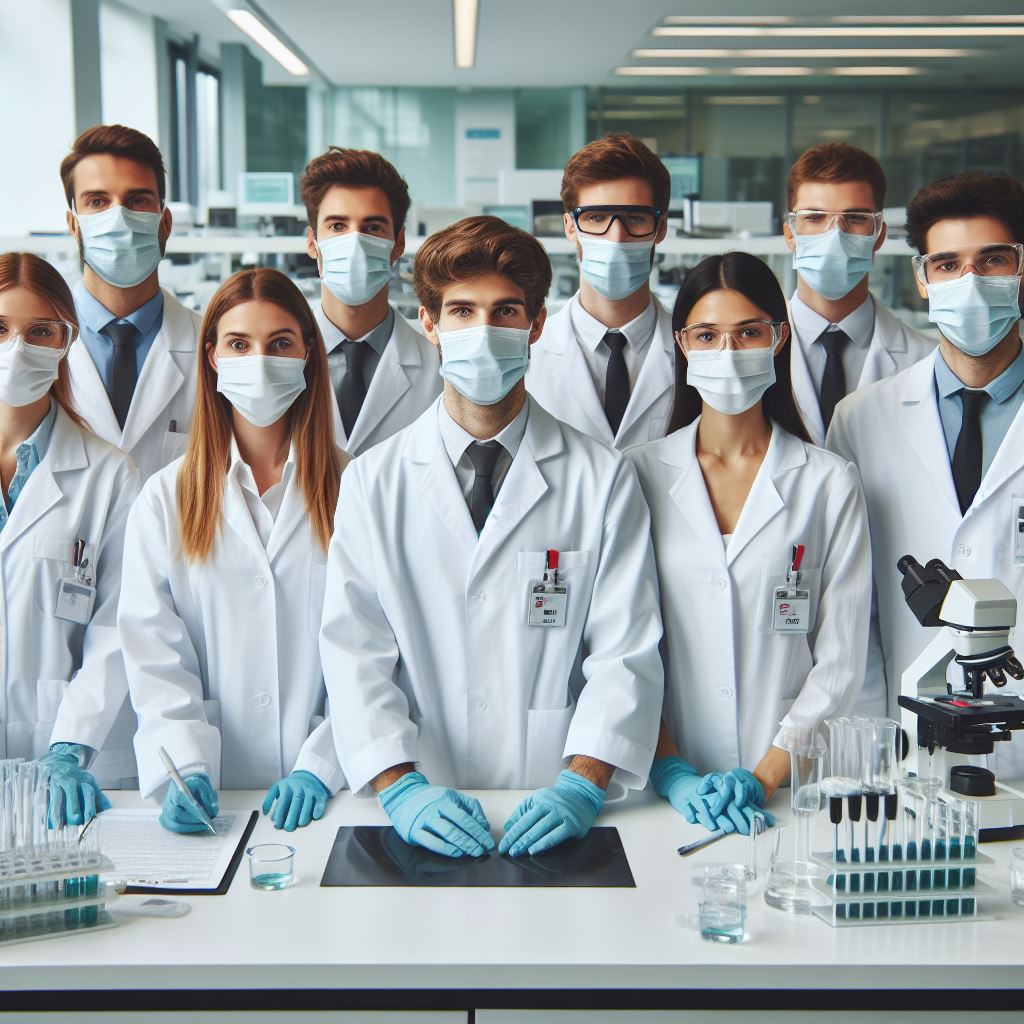Introduction
Lab safety protocols are crucial for ensuring a safe working environment in a laboratory. These protocols are not only important for the well-being of technicians but also for the integrity of scientific research.
In this blog post, we will delve into the significance of lab safety protocols and discuss why every technician should be aware of them.
We will provide an overview of the content that will be covered in this post.
Lab safety protocols play a vital role in preventing accidents, injuries, and potential hazards in a laboratory setting.
Technicians need to understand these protocols to protect themselves, their colleagues, and the environment.
This knowledge is crucial for minimizing risks and maintaining the integrity of scientific experiments.
In this blog post, we will explore the various lab safety protocols that technicians should know.
We will discuss the proper use and handling of chemicals, the importance of personal protective equipment (PPE), and the significance of following standard operating procedures (SOPs).
Additionally, we will emphasize the importance of proper waste disposal and the need for emergency preparedness and response plans.
By the end of this post, technicians will have a comprehensive understanding of lab safety protocols.
They will be equipped with the knowledge and skills necessary to create a safe and secure working environment.
Remember, lab safety is everyone’s responsibility, and it starts with being well-informed about the protocols in place.
Let’s now delve into the essential lab safety protocols that every technician should know.
General Lab Safety Protocols
Personal Protective Equipment
- Always wear a lab coat to protect your clothing and skin from chemicals.
- Use safety goggles to shield your eyes from potential chemical splashes or fumes.
- Wear gloves when handling hazardous substances to prevent direct contact.
- Choose appropriate footwear that covers your feet fully for added protection.
Chemical Handling and Storage
- Ensure proper labeling of all chemicals to avoid confusion and accidents.
- Follow segregation and storage guidelines to prevent incompatible chemicals from interacting.
- Handle hazardous chemicals with extreme caution, following approved procedures at all times.
Fire Safety
- Familiarize yourself with the location of fire exits and evacuation plans in your laboratory.
- Learn how to use fire extinguishers properly and understand which type is suitable for different fires.
- Adopt fire prevention measures such as maintaining clear pathways and avoiding cluttered work areas.
Lab safety protocols are crucial for every technician to ensure a safe and productive working environment.
By following these general guidelines, potential accidents and injuries can be minimized.
Read: Canadian Biologists and Climate Change Research
Biological Lab Safety Protocols
Biological laboratories deal with potentially hazardous materials, such as microorganisms and biological agents.
To ensure the safety of lab technicians and the surrounding environment, strict protocols must be followed.
Contamination Control
In a biological lab, understanding biological hazards is essential. Technicians must have knowledge of the microorganisms they are working with and the potential risks associated with them.
Proper disposal of contaminated materials is crucial to prevent accidental exposure or release of hazardous substances.
Any materials that come into contact with biohazardous materials should be treated as contaminated waste and disposed of accordingly.
Utilizing biosafety cabinets provides an additional layer of protection.
These cabinets, also known as biological safety cabinets or tissue culture hoods, create a contained working space, minimizing the risk of exposure to harmful microorganisms.
Handling and Disposal of Biological Waste
Understanding biohazardous waste categories is necessary to ensure appropriate handling and disposal.
Different levels of biohazardous waste necessitate specific protocols to mitigate risks effectively.
Unlock Your Career Potential
Visualize a clear path to success with our tailored Career Consulting service. Personalized insights in just 1-3 days.
Get StartedProper packaging and labeling of biohazardous waste is vital for safe transportation and disposal.
Clearly indicating the contents, potential hazards, and appropriate handling instructions helps reduce the likelihood of accidents or injuries.
Compliance with local regulations is crucial to avoid legal consequences and protect public and environmental health.
Each jurisdiction may have specific guidelines and requirements for handling and disposing of biohazardous waste. Technicians must stay informed and adhere to these regulations.
Personal Hygiene and Disease Prevention
Handwashing protocols are paramount in preventing the spread of microorganisms.
Lab technicians should follow proper handwashing techniques, including using soap, warm water, and scrubbing for at least 20 seconds.
Proper use of personal protective equipment (PPE) is essential to minimize the risk of exposure.
Gloves, goggles, lab coats, and disposable masks are examples of PPE that are commonly used in biological laboratories.
Immunizations and health monitoring play a critical role in protecting lab technicians.
Regular vaccinations for diseases associated with the microorganisms being handled are necessary to ensure immunization coverage.
Additionally, health monitoring helps detect any potential infections or illnesses early on.
Generally, biological lab safety protocols are essential for protecting lab technicians and preventing the release of hazardous materials.
Contamination control, proper handling and disposal of biological waste, and personal hygiene practices are key elements in ensuring a safe working environment.
By following these protocols diligently and staying up to date with regulations, labs can minimize risks effectively.
Read: Internship Opportunities for Biologists in Canada

Equipment and Instrument Safety
When it comes to lab safety protocols, it is crucial for technicians to understand and follow proper procedures to ensure their own safety and the safety of others.
This section will focus on equipment and instrument safety, outlining the importance of training and certification, calibration and maintenance, as well as electrical safety.
Proper Training and Certification
1. Importance of training for using lab equipment
It is essential for technicians to receive thorough training on how to properly operate and handle lab equipment. Lack of proper training can lead to accidents and injuries.
2. Certification programs available for technicians
Technicians can acquire certification through various programs that provide comprehensive training and assess their proficiency in handling specific lab equipment.
Certification improves job prospects and ensures competence.
Calibration and Maintenance
1. Regular calibration of instruments
Calibration is the process of adjusting and validating the accuracy of lab instruments. Regular calibration is crucial to ensure reliable and precise measurements in experiments and analyses.
2. Routine maintenance procedures
Technicians must follow routine maintenance procedures recommended by manufacturers to keep lab equipment in optimal condition. This includes cleaning, lubrication, and replacing worn parts.
3. Keeping records of maintenance activities
It is important to maintain detailed records of all maintenance activities performed on lab equipment. This helps track the history of maintenance, troubleshoot issues, and schedule future calibrations or repairs.
Electrical Safety
1. Basic understanding of electrical hazards
Technicians should have a basic understanding of common electrical hazards in the lab, such as electric shock and fire. This knowledge helps them identify and prevent potential risks.
2. Safe handling of electrical equipment
Technicians should follow proper procedures for handling electrical equipment, such as wearing appropriate personal protective equipment (PPE), using insulated tools, and avoiding contact with exposed wires.
3. Proper grounding and insulation
Ensuring proper grounding and insulation of electrical equipment minimizes the risk of electrical accidents.
Technicians should regularly inspect and maintain grounding systems and use insulated connectors and cables.
By prioritizing training and certification, performing regular calibration and maintenance, and adhering to electrical safety practices, technicians can greatly reduce the potential for accidents and maintain a safe working environment in laboratories.
Read: Canadian Biologists: Pioneers in Research
Uncover the Details: Lab Tech Specializations: Fields You Can Enter
Emergency Preparedness
In a laboratory setting, the safety of technicians and researchers is of utmost importance.
While preventative measures can minimize risks, it is essential to be prepared for emergencies and have the knowledge and skills required for prompt and effective response.
First Aid and Emergency Response
One of the key aspects of emergency preparedness is having knowledge of first aid procedures. Technicians must be trained in basic first aid, including CPR and treatments for common injuries.
This enables them to provide immediate assistance to individuals in need.
Immediate response to accidents or injuries is crucial in minimizing the potential harm.
Technicians should be proactive and react calmly in emergency situations, providing aid and reassurance to affected individuals.
This not only ensures their safety but also helps stabilize the situation before professional medical help arrives.
Effective communication with emergency services is vital in emergency situations.
Technicians must know how to provide clear and concise information to emergency responders, enabling them to assess the situation accurately and arrive prepared with the necessary resources.
Emergency Shutdown Procedures
In certain emergencies, it may be necessary to shut down specific equipment or even the entire laboratory.
Technicians must understand the shutdown protocols for different situations, such as fires, chemical leaks, or power failures.
This knowledge prevents further risks and ensures a controlled environment.
Technicians should also be aware of proper evacuation procedures, including designated evacuation routes and assembly points.
Regular drills and training sessions should familiarize them with evacuation plans, enabling them to lead others and evacuate safely during emergencies.
In cases where immediate action is required, technicians must know how to use emergency shut-off switches.
These switches allow for the quick disconnection of electricity, gases, or other hazardous materials, minimizing the potential for further damage or injury.
Hazardous Spill Management
Hazardous spills pose significant risks in laboratories, and technicians must be equipped to handle such situations.
They should be able to identify hazardous spills promptly, understanding the properties and potential dangers associated with different substances.
Once a spill is detected, technicians must follow proper containment and cleaning procedures.
This includes isolating the area, using appropriate personal protective equipment (PPE), and utilizing spill kits or absorbent materials to contain and clean the spilled hazardous substances.
By taking swift action, technicians can mitigate the impact of spills and prevent further spread or exposure.
Reporting incidents to the appropriate authorities is crucial in hazardous spill management. Technicians must promptly inform their supervisors or safety officers about the incident.
These individuals can then initiate the necessary protocols, such as contacting specialized spill response teams or notifying relevant regulatory agencies.
Timely reporting ensures that the appropriate measures are taken to address the spill and prevent any potential harm to the environment or human health.
By prioritizing emergency preparedness and following strict protocols, laboratory technicians contribute to creating a safer work environment.
Their knowledge of first aid, ability to respond swiftly, and understanding of shutdown procedures and spill management play a vital role in safeguarding both themselves and others in the laboratory.
Read: The Future of Biology Jobs in Canada
Conclusion
Recap
It is crucial for every tech to adhere to lab safety protocols to prevent accidents and protect themselves and others. We discussed various safety guidelines that should be followed in the laboratory.
Importance
Following safety guidelines ensures a safe working environment, minimizes the risk of accidents, and promotes the well-being of everyone involved.
Encouragement
It is essential for techs to continuously update their knowledge and skills regarding lab safety protocols.
Staying updated ensures that we are equipped with the latest information and techniques to handle any potential dangers in the lab.
Lab safety protocols are vital for the well-being of techs and everyone working in the laboratory.
It is our responsibility to adhere to these guidelines to prevent accidents and maintain a safe working environment.
Continuous learning and updating of protocols should be encouraged to ensure maximum safety and protection for all.




